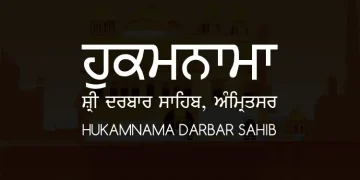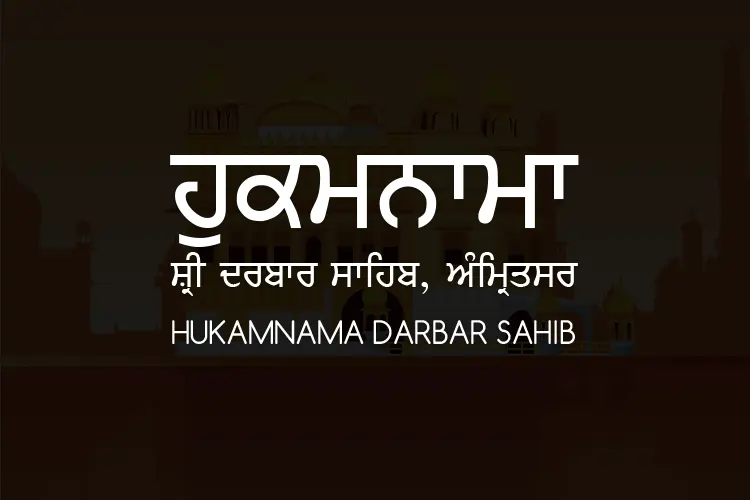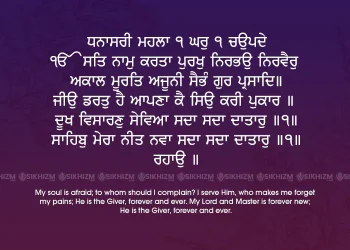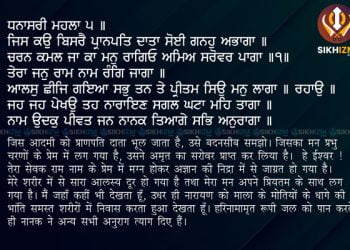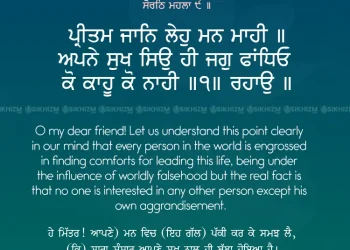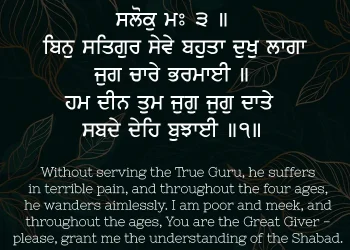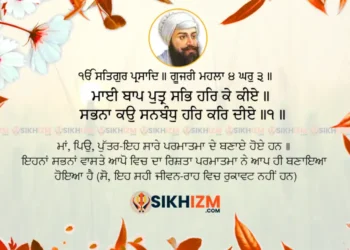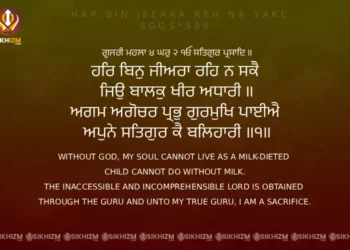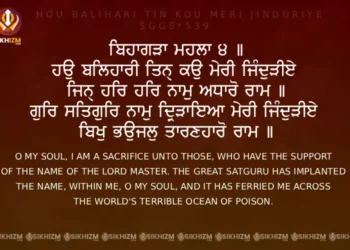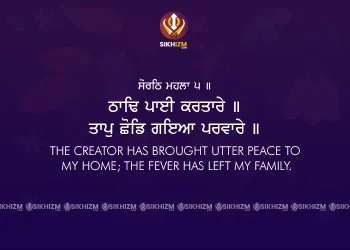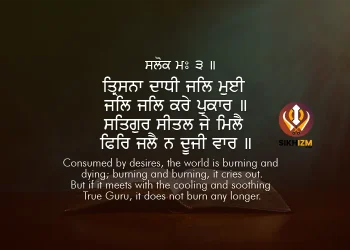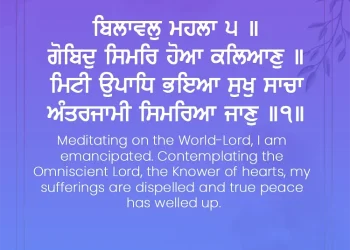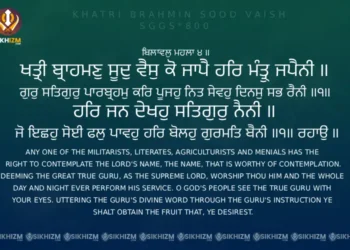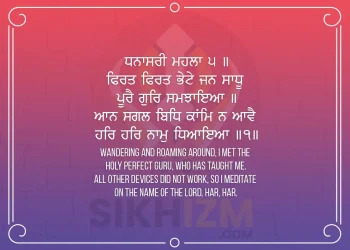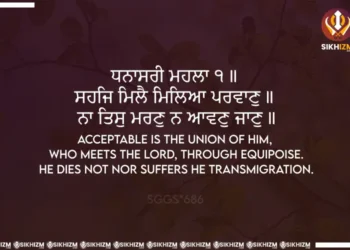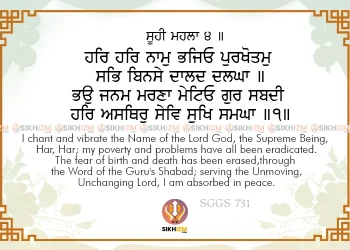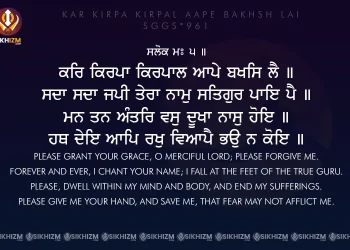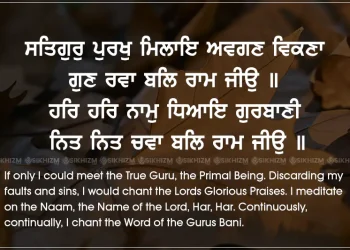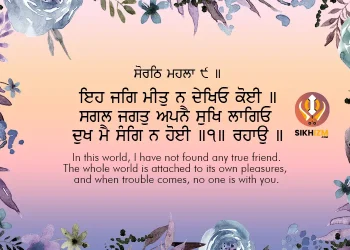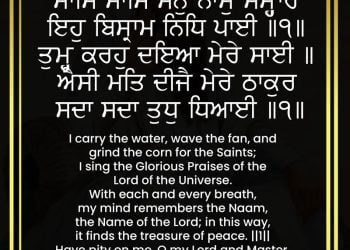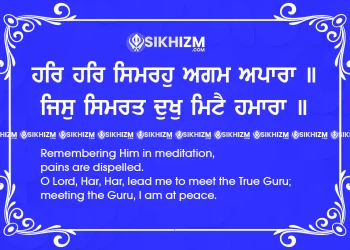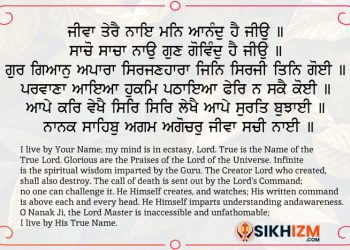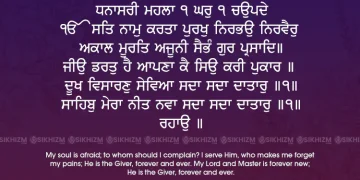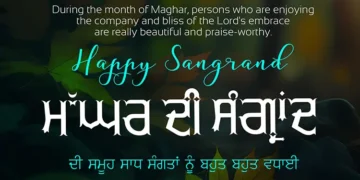Hukamnama Darbar Sahib Today
Hukamnama is a Sikh term that refers to a command or edict issued by the Guru Granth Sahib, the holy scripture of Sikhism. The Guru Granth Sahib is considered the living Guru of the Sikhs, and the Hukamnama is considered to be the word of God as spoken through the Guru.
The history of Hukamnama dates back to the time of the tenth Sikh Guru, Guru Gobind Singh. In 1708, Guru Gobind Singh declared that the Guru Granth Sahib would be the final and eternal Guru of the Sikhs. This was a significant event in the history of Sikhism, as it marked the end of the line of human Gurus and the beginning of the era of the Guru Granth Sahib as the spiritual guide for Sikhs.
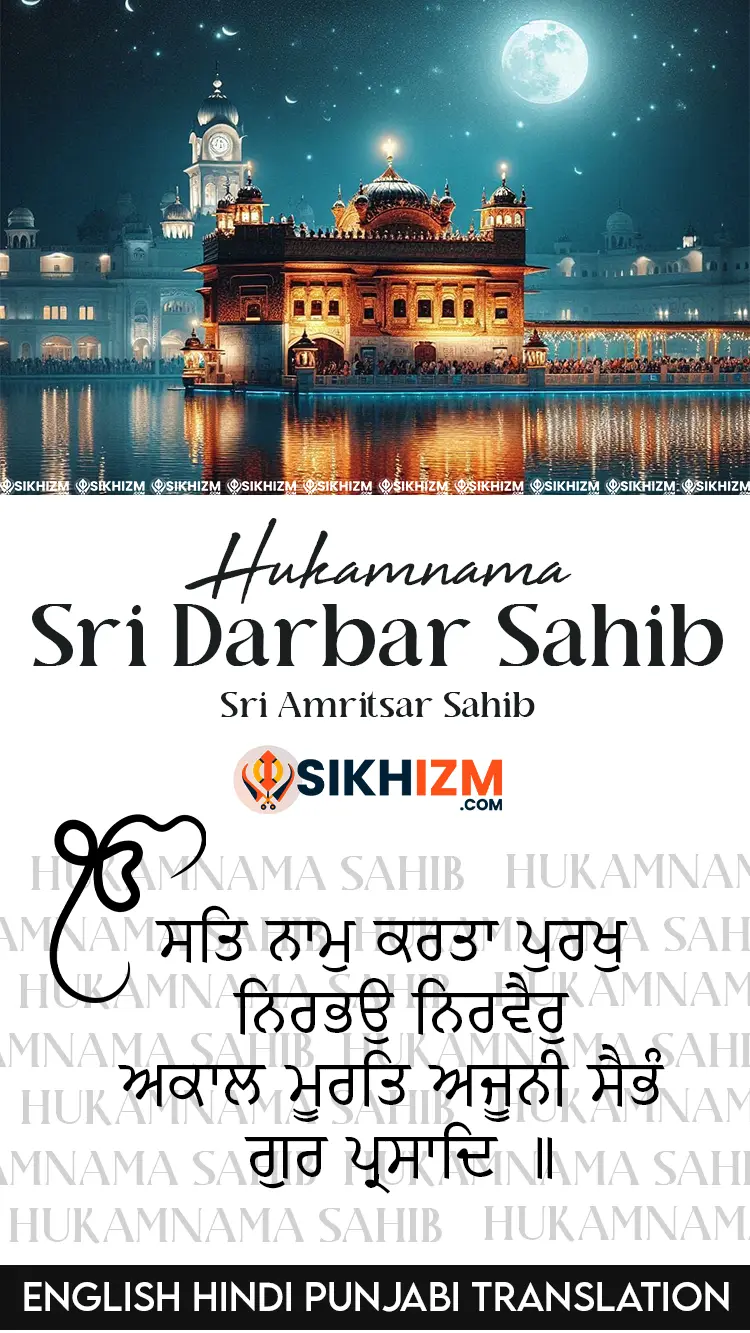 The Hukamnama is considered to be a powerful tool for spiritual guidance and decision-making for Sikhs. It is believed that by reading and following the Hukamnama, Sikhs can gain a deeper understanding of the teachings of the Guru Granth Sahib and find answers to their spiritual questions.
The Hukamnama is considered to be a powerful tool for spiritual guidance and decision-making for Sikhs. It is believed that by reading and following the Hukamnama, Sikhs can gain a deeper understanding of the teachings of the Guru Granth Sahib and find answers to their spiritual questions.
Daily Mukhwak is typically read in the morning at Gurdwaras, the Sikh places of worship, and can also be read at any time by individuals seeking guidance. The Hukamnama is chosen randomly by opening the Guru Granth Sahib to any page and reading the first hymn on the page. This is believed to be a way for the Guru to communicate directly with the individual seeking guidance.
It is also significant for the Sikh community as a whole, as it is often used to settle disputes and make important decisions. It is believed that the Hukamnama can provide guidance on issues such as community conflicts, political matters, and personal dilemmas.
| Looking for | Daily Hukamnama? |
| Place (Gurudwara) | Darbar Sahib, Sri Amritsar Sahib Ji Sri Harmandir Sahib Ji (Golden Temple) |
| Throned Guru | Sri Guru Granth Sahib Ji |
| Hukamnama Format | Text/Image/PDF/Audio |
| Original Text | Gurmukhi |
| Translations | English, Hindi, Punjabi |
| Transliterations | Punjabi, English, Hindi |
Table of Contents
1. Daily Mukhwak Darbar Sahib
The first Sacred Hymn read from the Guru Granth Sahib Parkash at the Golden Temple, Sri Harmandir Sahib of the Holy City is known as Hukamnama Darbar Sahib. Every morning between 4 AM-5 AM, Prakash of Sri Guru Granth Sahib takes place at Darbar Sahib Gurudwara. The first hymn that Granthi Singh reads when Guru Granth Sahib is opened, is of special value to every Sikh living across the world.
Because this was the place where Sri Guru Arjan Dev Ji first edited Aad Sri Guru Granth Sahib, Hukam taken here has become of supreme value to the entire Sikh Congregation. However, Hukamnama is what is passed to a Sikh from any Sarup of Sri Guru Granth Sahib, whatever Gurudwara Sahib he is attending at that time.
You can read Mukhwak in three languages Gurmukhi, English, and Hindi with Translations and Transliterations. We include a beautifully designed Gurbani Wallpaper written Mukhwak on it, Hukamnama PDF to Download released by SGPC, Amritsar.
Hukamnama Sri Darbar Sahib of Last 30 Days
Jio Darat Hai Apna, Kai So Kari Pukaar
Bani Sri Guru Nanak Dev Ji: Jio Darat Hai Apna, Kai So Kari Pukaar; documented on Page 660 of Sri...
Read moreDetailsਜਿਸ ਕਉ ਬਿਸਰੈ ਪ੍ਰਾਨਪਤਿ ਦਾਤਾ
Jis Ko Bisre Praanpat Daata Soi Ganhu Abhaga. Charan Kamal Ja Ka Man Raageo Amea Sarovar Paaga.
Read moreDetailsPritam Jaan Leho Man Mahi
Pritam Jaan Leho Man Mahi Lyrics: Apne Hi Sukh Sio Hi Jug Fandhio, Ko Kaahu Ko Naahi; Raag Sorath Mahalla...
Read moreDetailsBin Satgur Seve Bahuta Dukh Laga
Mukhwak: Bin Satgur Seve Bahuta Dukh Laga, Jug Chaare Bharmayi; Gurbani Guru Amardas Ji, Sri Guru Granth Sahib Page 603...
Read moreDetailsJin Kou Satgur Bhetia
Jin Kou Satgur Bhetia Se Har Keerat Sadaa Kamaahe; Bani Sahib Sri Guru Amardas Ji - Sri Guru Granth Sahib...
Read moreDetailsSukh Mangal Kalyan Sehaj Dhun
Sukh Mangal Kalyan Sehaj Dhun, Prabh Ke Charan Nihaareya is a sacred bani created by Fifth Guru Shri Arjan Dev...
Read moreDetailsMaai Baap Puttar Sabh Har Ke Kiye
Mukhwak Sri Guru Ramdas Ji "Maai Baap Puttar Sabh Har Ke Kiye, Sabhna Kao Sanbandh Har Kar Diye" @Ang 494...
Read moreDetailsGurmukh Antar Saant Hai
Gurmukh Antar Saant Hai, Man Tan Naam Samaye.. Mukhwak Sri Guru Ramdas Ji @Ang 653 Sri Guru Granth Sahib Ji...
Read moreDetailsHar Bin Jeeara Reh Na Sake
"Har Bin Jeeara Reh Na Sakai, Jeon Balak Kheer Adhari"; Raag Gujri Mahalla 4th, Guru Ramdas Ji, Page 506 of...
Read moreDetailsHou Balihari Tin Kou Meri Jinduriye
"Hou Balihari Tin Kou Meri Jinduriye, Jin Har Har Naam Aadharo Raam"; Raag Bihagada Mahalla 4th, Guru Ramdas Ji, Page...
Read moreDetailsGur Kai Bachan Ridai Dhyan Dhari
Gur Kai Bachan Ridai Dhyan Dhari "Gur Kai Bachan, Ridai Dhyan Dhari; Rasna Jaap Japo Banwari";Raag Suhi Mahalla 5th, Guru...
Read moreDetailsThaad Payi Kartare
Hukamnama Darbar Sahib Today: Thaadh Pie Kartaare, Taap Chhod Gaya Parwaare; Raag Sorath Mahalla 5 Bani Guru Arjan Dev Ji....
Read moreDetailsTrisna Dadhi Jal Mui, Jal Jal Kare Pukar
Hukamnama Darbar Sahib, Amritsar: Trisna Dadhi Jal Muee, Jal Jal Kare Pukar; Raag Vadhans Ki Vaar Ki Pauri 6th, With...
Read moreDetailsJab Jariyai Tab Hoye Bhasm Tan
Jab Jariyai Tab Hoye Bhasam Tan; Bani Bhagat Kabir Ji Ki Raag Sorath Page 654 of Sri Guru Granth Sahib...
Read moreDetailsGobind Simar Hoaa Kalyan
Gobind Simar Hoaa Kalyan, Miti Upaadh Bhaya Sukh Saacha, Antarjaami Simriya Jaan ; Raag Bilawal Page 826 of Sri Guru...
Read moreDetailsKhatri Brahman Sood Vais
Khatri Brahman Sood Vais Khatri Brahman Sood Vais, Ko Jaapai Har Mantar Japaini; Bani Sri Guru Ramdas Ji, Sri Guru...
Read moreDetailsFirat Firat Bhete Jan Sadhu
Firat Firat Bhete Jan Sadhu, Poore Gur Samjhaya, Aan Sagal Bidh Kaam Na Aavei, Har Har Naam Dhiyaya; Bani Sri...
Read moreDetailsSehaj Milai Miliaa Parvaan | Life of a Gurmukh
Sehaj Milai Miliaa Parvaan – Life of a Gurmukh or Guru-Minded Person explained by Guru Nanak Ji. ‘Sehaj Milai Miliaa...
Read moreDetailsTudh Bin Duja Nahi Koi
Tudh Bin Duja Nahi Koye, Tu Kartar Kare So Hoye; Mukhwak Sri Guru Arjan Dev Ji, documented on Ang 723...
Read moreDetailsHar Har Naam Bhajeo Purkhotam
Mukhwak Sachkhand Sri Harmandir Sahib, Amritsar: Har Har Naam Bhajeo Purkhotam, Sabh Bin-se Daalad Dalgha; Raag Suhi Guru Ramdas Ji,...
Read moreDetailsHar Ju Rakh Leho Pat Meri
Har Ju Rakh Leho Pat Meri, Baani Sri Guru Tegh Bahadur Ji, documented on Ang 703 of SGGS Ji in...
Read moreDetailsJiska Tan Man Dhan Sabh Tis Ka
Jiska Tan Man Dhan Sabh Tis Ka, Soi Sughad Sujani; Gurbani of Sri Guru Arjan Dev Ji from SGGS Ji...
Read moreDetailsSant Udhran Dayalang | ਸੰਤ ਉਧਰਣ ਦਇਆਲੰ
Sant Udhran Dayalang Aasrang Gopal Keertanah (ਸੰਤ ਉਧਰਣ ਦਇਆਲੰ ਆਸਰੰ ਗੋਪਾਲ ਕੀਰਤਨਹ ) Baani Sri Guru Arjan Dev Ji, Guru...
Read moreDetailsKar Kirpa Kirpal Aape Bakhsh Lai
Gurbani Sri Guru Arjan Dev Ji: Kar Kirpa Kirpal Aape Bakhsh Lai, Sadaa Sadaa Japee Tera Naam Satgur Paay Pae;...
Read moreDetailsਸਤਿਗੁਰੁ ਪੁਰਖੁ ਮਿਲਾਇ ਅਵਗਣ ਵਿਕਣਾ
Satgur Purakh Milaai Avgan Vikna Gun Ravaa Bal Ram Jiyo is Today's Hukamnama from Sachkhand Sri Harmandir Sahib, Sri Amritsar Sahib
Read moreDetailsEh Jag Meet Na Dekhio Koi
Eh Jag Meet Na Dekhio Koi, Sagal Jagat Apnai Sukh Laagyo, Dukh Mai Sang Na Koi
Read moreDetailsPani Pakha Piso Sant Aage, Gunn Govind Jas Gayi
Pani Pakha Peesao Sant Aage Gun Govind Jas Gayi; Bani Sri Guru Arjan Dev Ji, documented on Ang 673 of...
Read moreDetailsMere Hiarey Ratan Naam Har Basia
Mere Hiarey Ratan Naam Har Basia, Gur Hath Dhareo Mere Matha; Bani Sri Guru Ramdas Ji, documented on Ang 696...
Read moreDetailsਹਰਿ ਹਰਿ ਸਿਮਰਹੁ ਅਗਮ ਅਪਾਰਾ
Har Har Simrahu Agam Apara, Jis Simrat Dukh Mitae Hamara; Bani Sri Guru Ram Dass Ji, Ang 698 of Sri...
Read moreDetailsਜੀਵਾ ਤੇਰੈ ਨਾਇ ਮਨਿ ਆਨੰਦੁ ਹੈ ਜੀਉ
Jeeva Tere Naai Man Anand Hai Jeeo is today's Mukhwak of Sri Guru Granth Sahib from Amrit Vele Da Parkash...
Read moreDetails2. Hukamnama Darbar Sahib Amritsar
Sahib Shri Guru Granth Sahib is installed at the highest level in a Sikh's beliefs. Religious services of true Sikhs or Gurmukhs are constructed of
- Shabad Kirtan (singing hymns from Guru Granth Sahib Ji in praise of God),
- Ardas (community prayer led by Paathi Singh or any Gursikh person, while everybody stands with folded hands), and
- hukamnama (the Guru's Command) for the day.
Hukamnama from Darbar Sahib, Harmandir Sahib, Amritsar has become popular in recent years because it is aired globally via TV and other digital platforms. Darbar Sahib is closest to the heart of Sikhs because the Adi Granth was first composed here.
3. What is Hukamnama?
Hukamnama is composed of two Persian words Hukm and Namah. Hukam means Command or Order and Namah means Letter, which entirely defines the Hukamnama as a ‘Letter of command’.
4. Daily Hukamnama
The presence of the Adi Granth is mandatory at important religious ceremonies. Before the culmination of a service, it is opened by the granthi at random, and the first hymn on the left-hand page is read out to the Sangat, this reading is called the Amrit Vele da Hukamnama (guru’s order for the day), and it signifies the culmination of the service, with the authority of the guru as personified by the Adi Granth.
The second one is known as ‘Sandhya Vele Da Hukamnama’ which is taken while opening Sahib Shri Guru Granth Sahib in the evening path.
5. Hukamnama Sahib
Sahib word is used to honor everything which is religiously sacred in Sikhism. For example, we use Sahib words with the places like Amritsar Sahib, Sri Patna Sahib, Sri Anandpur Sahib, etc. to respect the relations of these cities with Gurus. As no other thing is sacred more than the Hukam of Guru to a Sikh, we read the pious Hukams with the name 'Hukamnama Sahib'.
6. Mukhwak
The literal meaning of Mukhwak is "Mukh" i.e. Chief and 'Wak' i.e. Sentence. So it is a synonym for 'Hukamnama Sahib'. It is also spelled as Mukh-Vaak and Mukh Vak.
7. History of Hukamnama
A hukamnama is, in fact, a letter of command or instruction written by the Sikh Gurus to Sikh Sangat or prominent Sikhs. Guru Tegh Bahadur called his letter a hukamnama. But the hukamnamas collected in these works do not belong only to this category.
Not only letters issued by the prominent Sikhs on behalf of the Guru and by the members of the Guru family but also the ones issued by Banda, Mata Sundari, and Mata Sahib Devi after the demise of Guru Gobind Singh are there. Even the edicts issued on behalf of the Khalsa and also by the Takhats are categorized as hukamnamas.
Literally, Hukamnamas were documents sent from the time of Guru Hargobind to Sangats or individuals, giving instructions or requesting assistance. The Hukamnamas are an important source of Sikh history.
8. Importance of Hukamnama
From the very beginning, a tremendous amount of religious importance has been attached to the Hukamnamas issued by the Sikh Gurus. These Hukamnamas were both received and obeyed with great religious fervor and respect by the Sikh congregations assembled in the Gurudwaras to whom they were addressed and read out aloud.
Sikhs considered adherence to these Hukamnamas as their religious duty. The Hukamnamas were issued for a variety of reasons from time to time, such as those relating to the Guru’s kitchen, donations to run religious centers, etc. As Shri Guru Granth Sahib is the present master of every Sikh, Everyone should follow the words of Guru Granth Sahib Ji which we get in the form of Daily Hukamnamas.
9. Listen Audio Hukamnama
From Darbar Sahib Amritsar, Today on Dated: 16/11/2025
